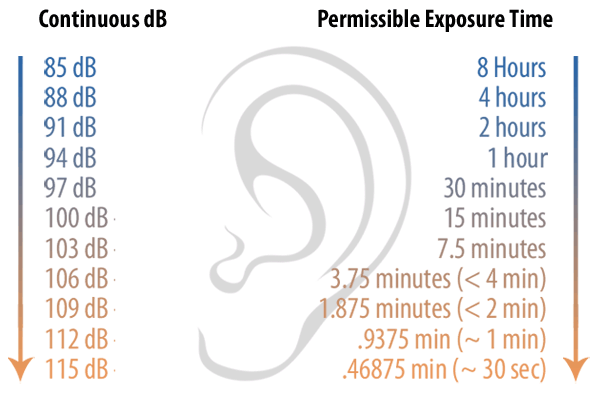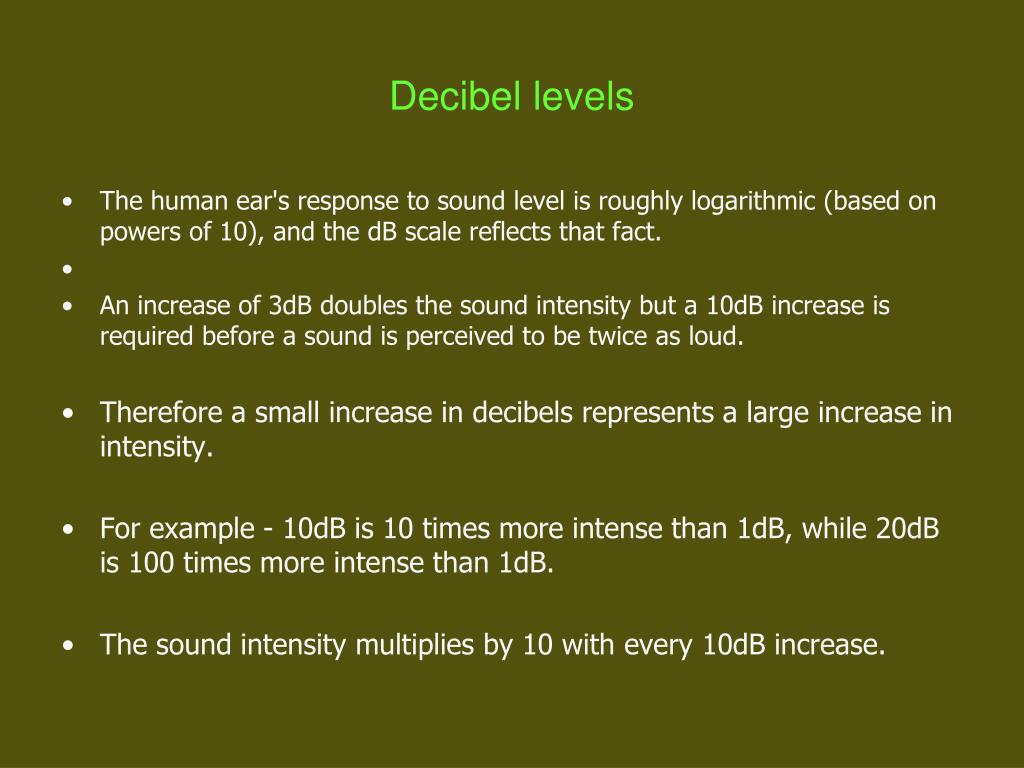

- Decibel level how to#
- Decibel level download#
That’s why the chart is intriguing: it shows us what is technically required to capture certain sounds. Some are designed to shine when paired with certain sound effects, or when doing specific tasks. We all know that not all recorders and microphones are created equally. A Guide to Gear Capabilitiesįirst, you can use it as a guide for field recording sound effects. Not all distances to the subjects were noted, however, most specifics were within 1 meter.
Decibel level download#
It details types, advantages and disadvantages, technology levels and features of hearing instruments in clear and easy to understand language.You can view it on Google Sheets, or download a copy from the links below: If you are interested in hearing Aids, their types and technologies, take a look at our consumer hearing aid advice guide. We also give advice on hearing devices and discuss hearing aid technology. We like giving good advice, we also like the idea that we can somehow get people to protect their hearing. Don’t listen to music too loud for too long
Be careful in the car: Listening to music in a confined space increases the risk of hearing damage. Wear ear protectors: Wear ear protectors (earplugs or earmuffs) if you are using noisy equipment such as power drills, saws, sanders or lawn mowers. Don't put up with work noise: If you’re experiencing noise at work, talk to your human resources (HR) department or your manager and ask for advice on reducing the noise and getting hearing protection. If you like live music, they are well worth investing in. You can even invest in custom sets for about £120. They won't change the fidelity of the music, just lower the level of sound. They can reduce average sound levels by between 15 and 35 decibels depending on the type or filter. Use earplugs when you’re listening to live music: Decent sound filtering ear-plugs are available easily. A good rule of thumb is that if you need to shout to be heard above the sound, it's too loud. Even a small reduction in volume can make a big difference to the risk of damage to your hearing. Turn down the volume: Be awre of the volume of your device, turn down the volume on your TV, radio or hi-fi a notch. Ear-bud style headphones and in-the-ear headphones are less effective at drowning out background noise. These block out background noise and allow you to have the volume lower. Wear headphones: For listening to music, try to choose noise-cancelling headphones, or go for muff-type headphones. Or it will restrict the volume to a safe level. Generally when you try to put the volume up past a certain level it will tell you you are passing the safe level. Use the 60:60 rule: The 60:60 rule is to listen to your personal music player at 60% of the max volume for 60 minutes. All MP3 players iPods and smart phones bought within the EU have a smart volume feature. Don't listen to your personal music player at very high volumes, If the music is uncomfortable for you to listen to, or if the person next to you can hear the music from your headphones it is too damned loud. Turn down the damned music: You really need to think about the volume that you are listening to your music at. Protect your ears on the job (and on the DIY job) with ear protectors – earplugs or earmuffs – and get away from the noise as quickly or as often as you can. Use earplugs or ear muffs when working The louder the noise and the longer you're exposed to it, the greater the chance of hearing loss. Here are some tips to help you protect your hearing daily: Like I said, once it is gone, it is gone, so take proper steps to protect your hearing your older self will thank you. the difference between 10dB and 20dB would be the same as the difference between 100dB and 110dB, then instead of writing 100dB we would have to write 10000000000dB. If decibels were rated on a linear scale, i.e. Logarithmic values are used to make reading what would be large number much easier. For example, the difference between 10dB and 20dB is smaller than the difference between 100dB and 110dB. 
The list below gives you an idea of how noticable a change in decibel level will be to you:ĭecibels are measured on a logarithmic scale, which means that the difference between values increases as the values get larger. Perceptions of increases in decibel level 112 dB personal cassette player on high.
Decibel level how to#
How to talk to someone with hearing loss.






 0 kommentar(er)
0 kommentar(er)
